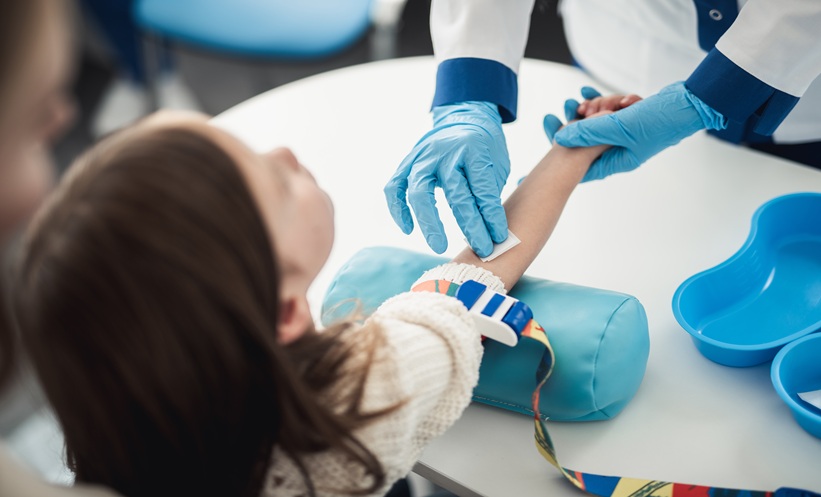Interviewees: Edoardo G. Giannini,1 Sachin Modi2
1. Gastroenterology Unit, Department of Internal Medicine, University of Genoa, Genoa, Italy
2. Interventional Radiology, Department of Radiology, University Hospital Southampton, Southampton, UK
Disclosure: Prof Giannini is associated with Shionogi, AbbVie, Gilead, and Eisai for the purpose of consultancy; and in a teaching capacity with Shionogi. Dr Modi holds consultancy contracts with Boston Scientific and Delcath Systems.
Support: The publication of this feature interview was supported and reviewed by Shionogi Europe, London, UK. The opinions expressed in this article belong solely to the named interviewees.
Acknowledgements: Medical writing assistance was provided by Dr Allison Kirsop, Scientific Writers Ltd., Edinburgh, UK.
Citation: EMJ. 2020;5[1]:24-28.
Interview Summary
For this article, EMJ conducted interviews with two key opinion leaders, Prof Edoardo G. Giannini and Dr Sachin Modi, world experts in hepatology and interventional radiology, respectively, to gain insight and perspective on the issues surrounding how to adequately prepare patients for intervention. Prof Giannini is the Academic Director of the Gastroenterology Unit and Director of the Emerging Gastrointestinal and Liver Diseases Programme at the University of Genoa in Italy, and Dr Modi is a consultant interventional radiologist and oncologist at University Hospital Southampton in the UK.
The article begins by discussing the challenges faced by specialists in preparing patients with platelet transfusions for intervention, then exploring the unmet needs as described by the two experts. Finally, new developments and how they may positively alter current procedures and enhance co-operation between the specialities are also examined.
INTRODUCTION
Crucial Issues in Preparing Patients for Intervention
Professor Edoardo G. Giannini and Doctor Sachin Modi
Among the various options available to increase platelet count in patients with chronic liver disease (CLD) who require invasive procedure or surgery, only platelet transfusion is commonly employed in clinical practice. EMJ asked both experts about the importance of raising platelet levels in patients, and their views on the limitations of the options currently available.
Prof Giannini shared that when the clinician performing the procedure considers that the presence of thrombocytopenia may present a risk of bleeding, only platelet transfusion is used to increase platelet count in patients with cirrhosis before an invasive procedure is performed. However, platelet transfusions are not entirely free of possible shortcomings. In thrombocytopenic patients the aim of platelet transfusion is to prevent bleeding, although any increase in platelet count may be transient or insufficient. It is known that there are challenges in evaluating the effectiveness of platelet transfusion. Additionally, for those in need of repeated transfusions, the risk of alloimmunisation may also be relevant.
Dr Modi added that the interventional radiologist (IR) will generally follow the consensus guidelines on preprocedural management of coagulation status and haemostatic risk in obtaining image-guided interventions. The guidelines are written in co-operation between the Society of Interventional Radiologists (SIR) and the Cardiovascular and Interventional Radiology Society of Europe (CIRSE). Dr Modi added: “We know that platelets are important in terms of risk of bleeding and that thrombocytopenia or low platelets result in an increased risk of bleeding with image-guided interventions. Based on the complexity of the procedures, we like to have a certain platelet level to ensure that the procedures can be performed safely with minimum risks of bleeding.”
Liver biopsy comes under ‘Category 2/High Risk’ in the guidelines for coagulation status and haemostasis risk,1,2 procedures with a moderate risk of bleeding, and in the management of these cases, Dr Modi explained that he would like the platelet counts to be above 50,000 units. “If the level is below 50,000 units, we recommend a transfusion to make sure that the platelet count is sufficiently high enough to perform the biopsy safely,” he clarified. Prof Giannini added: “There are few alternatives to platelet transfusions; procedures such as partial splenic embolisation carry their own risks, the effect on raising platelet levels is not absolutely reliable, and these procedures are rarely performed. However, this invasive procedure is not free from potential complications such as the formation of splenic abscesses, and the majority of patients who undergo the procedure experience abdominal pain and fever.”
From the perspective of the IR, the interviewees were asked which risks come with low platelet levels for the patient, and for the success of the intervention. Dr Modi explained how a liver biopsy is a technically relatively simple procedure and that there are commonly two types of liver biopsies performed: a general liver biopsy, and targeted biopsies of liver lesions to identify the lesions. The main risk of performing a liver biopsy is bleeding, with the significance being that patients can have life-threatening bleeding following this procedure, in the worst-case scenario, leading to death. He said: “Although this is quite rare, it is a significant risk and can result in patients requiring emergency procedures such as surgery to stop the bleeding. However, it is more likely to be embolisation, finding the bleeding point within the blood vessels and stopping it with minimal invasion.”
Most IR will mention that there is a rare but possible risk of mortality associated with liver biopsies, but their primary concern is the risk of bleeding. To ensure these risks are minimised it is important that all bleeding parameters are in line before biopsies are carried out. Risks are slightly higher for patients with CLD if they have an increased risk of bleeding, or if tumours in the liver are hypervascular, i.e., have a rich blood supply. The location is also relevant: there is a slight reduction in risk of bleeding if tumours are based within the centre of the liver versus the periphery, near the liver capsule. Often, peripheral liver tumours are more likely to cause significant bleeding.
Current Options for Obtaining Platelet Threshold
Professor Edoardo G. Giannini and Doctor Sachin Modi
An important question is whether a patient can be properly prepared with platelet transfusions to reach the targeted platelet level. Many factors may influence the increase in platelet count following platelet transfusions, such as the level of thrombocytopenia and the number of platelets transfused, in addition to other factors unique to patients with advanced CLD such as the presence of splenomegaly. Taking all these factors into account, a clinically meaningful increase in platelet count is often not obtained and highlights that the usual dose of platelets administered is barely able to increase platelet counts before an invasive procedure. Prof Giannini stated that one of the unresolved questions in patients with advanced CLD is what may be the ‘safe’ platelet count threshold needed before a procedure that carries the potential for bleeding. He recently evaluated patients within his institution to approximate a threshold where bleeding events are more frequent, and this work has recently been published.3 “We don’t have the ultimate threshold, but we do have data that reveal platelet levels associated with a lower risk of bleeding.”
Also, whether platelet transfusions or other pharmacological or non-pharmacological means used to increase platelet counts may be associated with a lower likelihood of procedural and postprocedural bleeding is a challenge faced by hepatologists when they need to prepare a patient for an intervention with platelet transfusions. Prof Giannini added: “Patients often need to be hospitalised which may increase both direct and indirect costs associated with the procedures. Additionally, platelets may not be readily available, and this may delay performing the procedures.”
On the same question of obtaining patient platelet thresholds, Dr Modi continued by saying: “Ideally, we are talking about two different patient groups here: inpatients at the hospital, and outpatients who come in for the liver biopsy as an elective procedure. For both groups we want blood parameters including the international normalised ratio and a platelet count of at least 50,000 units on the day of the procedure, to enable us to perform the procedure. If a patient has liver dysfunction or CLD, preferably we want the blood tests within 24 hours so we can be confident that the risk of bleeding will be minimal. It is easier for a hepatologist to manage this in an inpatient; the problem lies when we have outpatients for elective liver biopsies. In the latter group, patients have their blood tests on the morning of the procedure, and if these are deranged then it can be quite difficult to correct them in the timeframe required to perform the biopsy.”
IMPORTANCE OF DEVELOPING ALTERNATIVE OPTIONS
Issues Experienced in Co-Operation Between Each Expert Group
Professor Edoardo G. Giannini and Doctor Sachin Modi
Prof Giannini and Dr Modi were asked whether the co-operation between the hepatologist and IR is optimal for preparing a patient for an intervention, or if there are options for improvement. Prof Giannini explained that co-operation is essential to schedule the intervention adequately and to prepare the patient appropriately, stating: “Close contact between specialists and a shared view of the (bleeding) risks inherent to the procedure, including a desirable platelet count threshold that should be obtained to safely carry out the procedure, are fundamental.” Dr Modi agreed that there are indeed options for improvement: “In our hospital we use an IR checklist which we send up to the ward on the day before the procedure. One of the specialist nurses looking after the patient signs that they have received it and completes all the information requested; this includes confirming simple things such as whether the patient is ‘in a gown’ and ‘appropriately clean,’ to more important requests such as the date and results of blood tests, and whether the patient is on anticoagulation. If there are any issues, these can be identified at an early stage, i.e., the day before the procedure, and can be corrected in time for the procedure the next day,” he affirmed.
Within Dr Modi’s hospital, patients coming in for elective liver biopsies are dealt with by a radiology booking team. Usually these patients have a telephone preoperative assessment with a nurse, again looking to identify any factors that may indicate an increased bleeding risk. Problems are highlighted to the IR who then has an opportunity to find a solution before the patient comes in. Unfortunately, the blood tests are usually done the morning of the procedure so deranged platelet count on the day of the procedure is difficult to manage. He continued by saying: “The co-operation between the IR and hepatologist is really important and not just a simple case of a hepatologist submitting a request for a liver biopsy. They need to be aware that these procedures have significant risks associated with them, and anything they can do to try and help this process through will be best for the patient.”
Addressing what happens if the hepatologist cannot raise the platelet level with platelet transfusion, Prof Giannini confirmed that most of the time the procedure needs to be rescheduled, and this may have an impact on both the IR and clinical ward workloads. It is understood that some patients are unable to have the intervention due to an inability to raise platelets to a sufficient level for the procedure. Prof Giannini responded by saying: “It is essential for patients with very low platelet counts in need of particular interventions to achieve a safe platelet count threshold, due to the high risk of bleeding associated with the procedure.” Dr Modi confirmed this, saying that some patients are unable to have the procedure because IR are becoming increasingly busier in hospitals. “We have a set number of patients allocated for the morning and for the afternoon while making provision within our day to deal with emergencies, but generally, if the platelet count is not correct, these procedures are often cancelled because they cannot simply be slotted in later during the day. So, yes, it is an issue that these patients then have their procedures cancelled because platelet counts or other blood parameters are not at the right level,” he added. Additionally, when platelet levels cannot be raised sufficiently, the IR may then have a discussion with the hepatologist about alternatives to a liver biopsy, e.g., performing a transjugular liver biopsy. An IR is generally happier to perform this type of procedure when a patient’s platelet counts are lower because the risk of bleeding from this is significantly reduced, although targeting of lesions cannot be done with this technique.
For an intervention that needs to be repeated shortly after the first, the experts were asked for their opinion on whether the preparation of the patient needs to be completely repeated with platelet transfusions to raise the platelet levels. “The whole preparation usually needs to be repeated because in patients with CLD, the increase in platelet count tends to be short-lived,” Prof Giannini said. “The use of thrombopoietic drugs may obviate this need as they are able to maintain an adequate platelet count for a longer period of time compared with platelet transfusions. This removes the need for repeated preparations and transfusions.” Dr Modi
responded that it is dependent upon the type of procedure. “For percutaneous biopsies we are quite strict about the platelet count being 50,000 units or above, whereas for transjugular liver biopsies we generally allow some more leeway. However, we would not want to perform a transjugular biopsy, for example, on someone with a platelet count of less than 30,000 units, so we would check they had blood tests within 24 hours in case they needed a transfusion. There is an unmet need here, as currently all we have are platelets. We give patients platelets and that takes time. There are often delays because levels need to be rechecked; there are delays with transfusions and some nurses are trained in transfusions while others are not so there is a definite need for an alternative, or a new agent that can help raise platelet levels more efficiently.”
New Developments
Professor Edoardo G. Giannini
It is interesting to consider what might change for the experts, the co-operation between the two specialities, and the patient preparation with new developments such as the use of thrombopoietin receptor agonists (TPO-RA). This class of drug has been approved, both in the USA and the European Union (EU), for the treatment of severe thrombocytopenia in patients with CLD undergoing invasive procedures. “In several trials, their use was associated with a significant decrease in the need for platelet transfusion; moreover, due to their modality of action, TPO-RA are able to increase platelet count for a longer period of time compared with platelet transfusion, thus allowing for a safer postprocedure window where an adequate platelet count is maintained,” Prof Giannini said.
“In this regard, the available studies did not describe a statistically significant association between the use of TPO-RA and the occurrence of relevant side effects, such as thrombotic events, although I feel that these drugs should be carefully administered in patients with a higher risk for thromboembolic events, and with appropriate monitoring.”
Undoubtedly, TPO-RA will modify procedures and schedules and may help avoid unnecessary costs related to prolonged patient hospitalisation and delayed or cancelled procedures. Prof Giannini recommends that clinicians and IR should familiarise themselves with the modality of action of drugs, patient monitoring, and timeliness of the procedure. He added: “The advancement brought along by these drugs may radically modify how procedures are planned, and this will initially require close co-operation among the various specialists involved in the process. The ultimate goal is improving the quality of assistance provided to patients.”
CONCLUSION
It is important that platelet levels are raised not only for the intervention, but also for up to 3 weeks after the procedure. Patients need raised platelet levels during the healing process too: some bleedings can occur 5–10 days after the intervention, an intervention may need to be repeated, or an additional intervention may need to be performed. Dr Modi commented on possible developments that would improve the situation for the patient saying: “When the hepatologist requests the liver biopsy in a patient who they know may be at a slight risk of having thrombocytopenia, it would be good if they were able to prescribe them with a medication which can be taken in the days leading up to the biopsy. On the morning they come in, they have their blood tests, and then, hopefully, their platelet count would be at the appropriate level.” Continuing, he said: “I think this would be positive for all parties involved: the hepatologist, the IR, and the patient. It would mean that less biopsies would be cancelled, and it would be safer for patients and for IR. Overall, it would be a very positive thing.”
Biographies
Prof Edoardo G. Giannini
Professor of Medicine, Department of Internal Medicine, University of Genoa, Genoa, Italy
Prof Giannini is an expert in liver pathophysiology with application to the prognostic study of the liver functional reserve. His research interests include the noninvasive staging of chronic liver disease, haemostasis in liver patients, staging, and therapeutic management of hepatocellular carcinoma. He is author of >250 publications in international journals and has written several book chapters.
Dr Sachin Modi
Consultant Interventional Radiologist/Oncologist, University Hospital Southampton, Southampton, UK
Dr Modi joined the University Hospital Southampton in 2016 and plays a key role in the chemoembolisation (transarterial cheomembolisation: delivering beads with chemotherapy into liver arteries) and radioembolisation services (selective internal radiation therapy: delivery particles with radiation into liver arteries). His primary passion is interventional oncology delivering liver-directed treatment for primary or metastatic liver cancer, as well as prostate and fibroid embolisation. He is currently co-investigator in several research trials being carried out at University Hospital Southampton and is author of numerous publications and presentations at national and international IR conferences.








